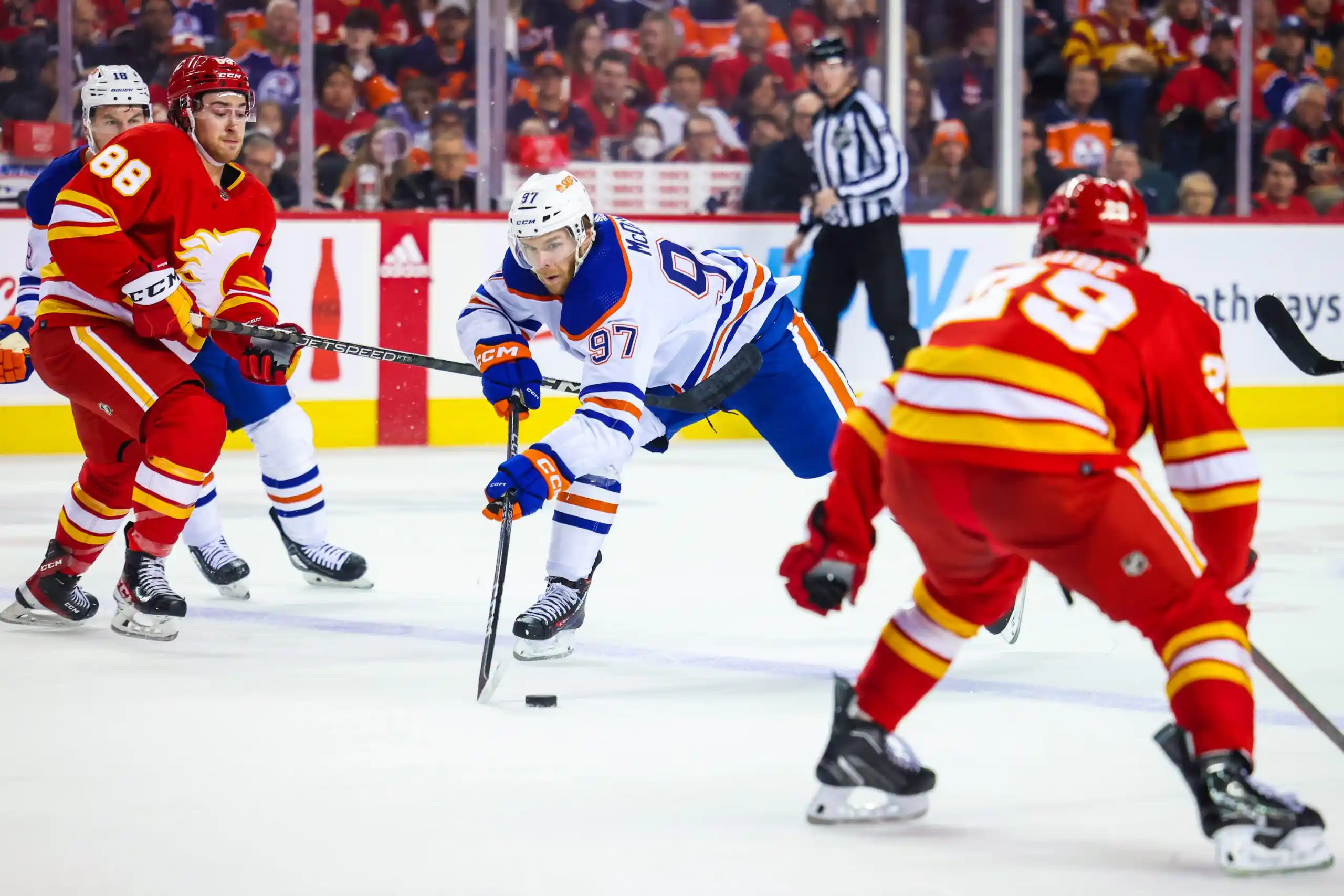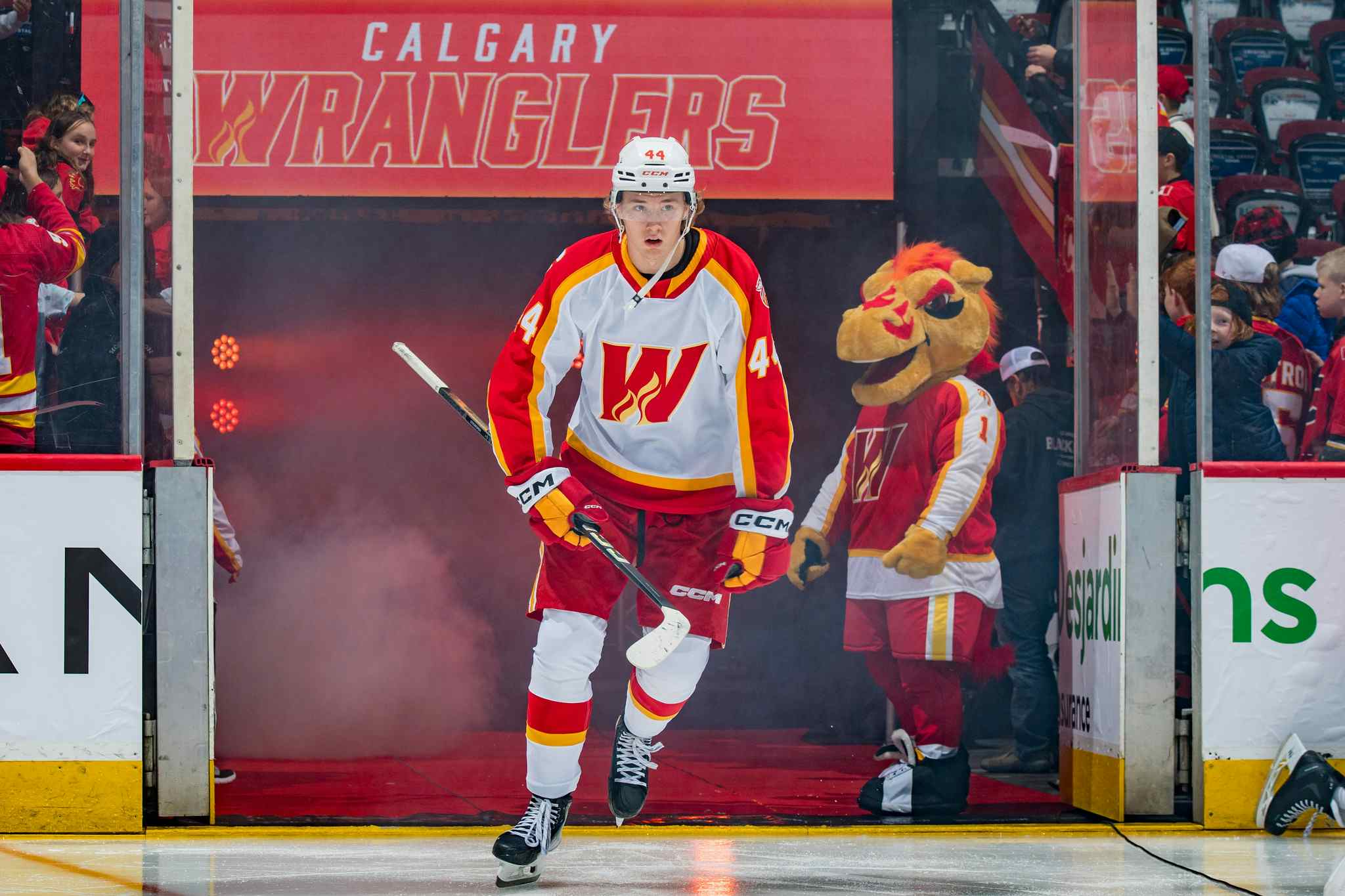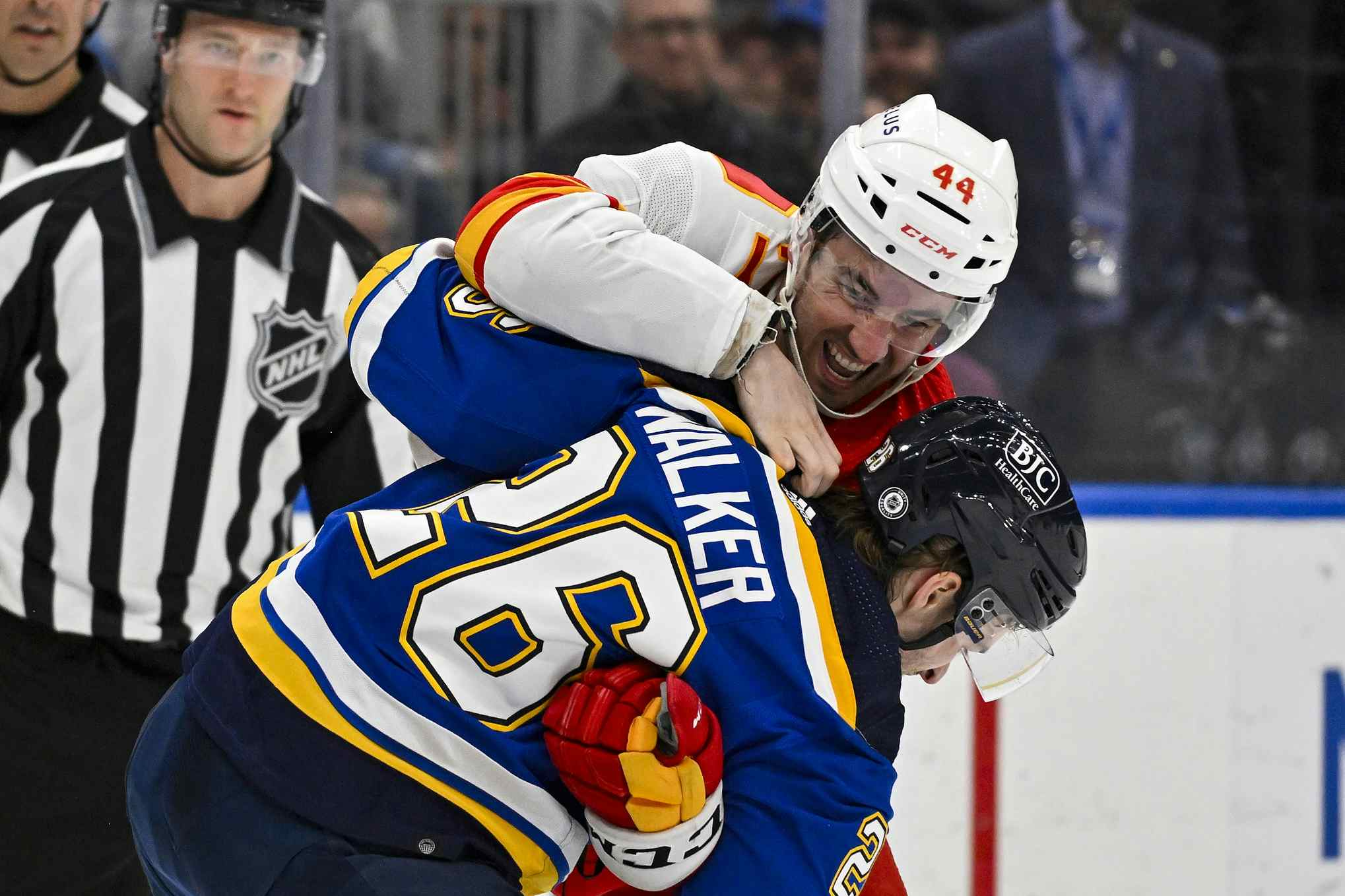Canucks 2, Flames 1 (OT) post-game embers: Little room for error
By Ari Yanover
7 years agoThe game reset for overtime.
That was a bad first goal on Brian Elliott, there’s no denying that. That said, the Flames outplayed the Canucks the entire way, and to an extent that you can’t simply brush it off with a cry of “score effects!” Not with the amount the Flames pushed, and definitely not with all of those penalties they had to kill.
And they wouldn’t have been pushing as hard as they did in the final minutes if they weren’t down 1-0. The Canucks scored a goal Elliott shouldn’t have let them; the Flames broke Ryan Miller’s dam in the final six seconds.
After that, it was a matter of overtime. Three-on-three play makes mistakes deadly. Mikael Backlund and Michael Frolik got caught on the wrong side of it. It happens, and the Flames were able to crawl away with a point to keep them just barely relevant. (They’re ninth in the West with a winning percentage of .525. The Kings are at .526.)
Goalie vs. goalie
There was plenty of excitement to be found in this one, but two players in particular really stood out: Elliott and Miller.
After the first goal he gave up, Elliott was a rock. True, he didn’t have nearly as much to fight against as his counterpart did, but he still made a number of massive saves to keep it a one goal game. And remember the game he won against the Flyers? He wasn’t quite perfect in that one, either, though the goal he gave up wasn’t his fault – but his team was able to score more than once in that game.
I wouldn’t switch goalies at this point.
For as much as Elliott did though, Miller was the story of this game – exactly the same as he was the last time the Flames were in Vancouver. Think of it this way: Miller has a .918 save percentage this season, and a .972 save percentage against the Flames. They scored three goals on him all year. And he did, essentially, take three points from them in 2017.
Those three points would put the Flames in a better position now, but even then the playoff chase would be extremely tight. There’s no margin for error – but Miller was outstanding in shutting them down.
It really wasn’t close
The Flames had an overall 63.54% CF in all situations throughout the night, culminating with a dominating 87.1% in the third period. The only time the Canucks made it close was in the second, and that was when they had a four and a half powerplays to work with.
And no: it wasn’t the result of poor systems, or the Flames trying to “game the corsi”, or any such nonsense. It was the Flames legitimately swarming the Canucks and simply being unable to score on Miller.
Well, that and for every golden opportunity they had, there was a shot that went just wide, or a tip inches away from connecting, or passes missed, or any other mess of poor executions resulting in what should have been tap-ins simply not happening.
The Flames got chances. Tons of them. And every time it looked like they should have had a goal, they themselves flubbed the play. Unless you think Glen Gulutzan’s systems are set up to make them fail to connect on purpose, then they were setting up as well as they were supposed to – and missing on the one final component that would have resulted in a goal.
This was a team with out of sync scoring chances. Three players – Sean Monahan, Dougie Hamilton, and Deryk Engelland – had five shots on net each. We’ll forgive the defencemen; Monahan had every opportunity to get his 100th goal and just couldn’t bury it.
I would stick with these lines, though. Versteeg added an element to Monahan’s line that Brouwer hasn’t necessarily, and it’s worth exploring further.
Penalty kill came to play
The Flames’ penalty kill showed up against the Flyers, and it did against the Canucks, too. It has now been four games since the Flames allowed a powerplay goal.
There weren’t any five minute majors to kill off this time around, but there was a double minor (broken up by an intermission) and an abbreviated five-on-three. You can probably raise an eyebrow at some of the penalties called – Kris Versteeg’s unsportsmanlike conduct (which especially brings up memories of this Kerry Fraser blog post), Nikita Tryamkin putting Troy Brouwer in a headlock and nothing happening – but they were all, on some level, penalties. (Not like Elliott was called for going after Troy Stecher, either.)
And the Flames didn’t budge. And when they did, Elliott didn’t budge. In a game that could have completely spiralled out of control following the Canucks’ first goal, they didn’t let it happen. They didn’t get the win, but that was more due to an inability to actually connect and score than due to them folding, as we’ve seen earlier in the season.
They killed five penalties – almost five straight, really – and without that, there’s no last-second game-tying goal.
Third pairing disparity
As much as lines and defence pairings are set, they won’t always be out on the ice together. There’s going to be some discrepancy within their numbers. But barring any particularly obvious distinctions – such as, say, Johnny Gaudreau’s presence as an extra forward – they’ll generally remain close.
At 5v5, Hamilton and Mark Giordano had very similar minutes and corsi ratings (right at the top of the list), as did Engelland and T.J. Brodie (but right at the bottom for them). Then there’s Matt Bartkowski and Dennis Wideman, who played roughly the same amount of time, but Bartkowski had a rel CF of +14.13 while Wideman was at +1.96.
That’s a pretty big difference. It’s not explained by zone starts, either, as they had the same at 66.67%.
So what happened there? Simply put, Bartkowski ended up out there alongside Hamilton for one shift – I believe early in the second period, shortly after Versteeg’s double minor expired – that saw the Flames go HAM (four corsi events for, one against). Bartkowski didn’t do anything particularly special, he just captured the luck of the draw.
That said, it is at least noteworthy that neither Bartkowski nor Wideman particularly made asses of themselves this game (or at least, not in a way that proved statistically detrimental). Hell, there were a couple of moments in which I thought Bartkowski was going to tie it – he did have some good looks – which would have been pretty funny in and of itself.
The narrowest of margins
The Flames have five games left until the trade deadline. Two of them are against opponents they are directly competing against for a playoff spot: the Predators and the Kings.
The Canucks picking up two points is meaningless. However many points the three eastern teams the Flames play in between the Nashville and Los Angeles games are meaningless, as long as the Flames are getting points, too.
But Calgary needs to pick up four points against Nashville and L.A. The Preds will still have a game in hand next time they face the Flames; a regulation win could see them either pull ahead or keep pace, while a regulation loss could see them fall behind further. The Kings will also have a game in hand when they face the Flames; with over a week out from that game it’s too far away to tell how big a point swing them playing each other could be – but it’ll probably be a big one regardless.
Recent articles from Ari Yanover





